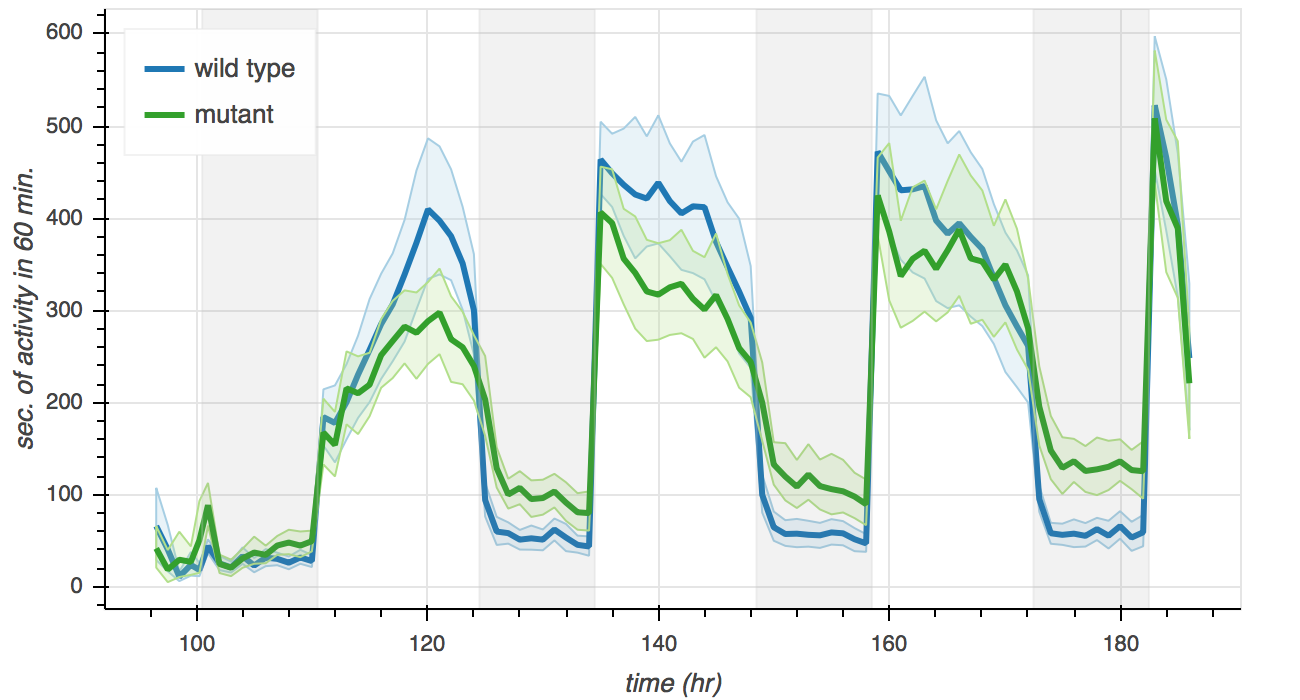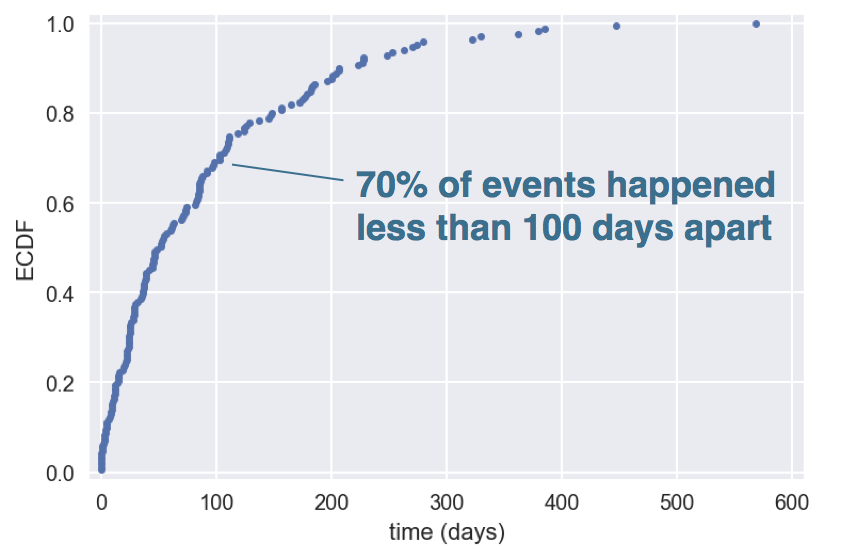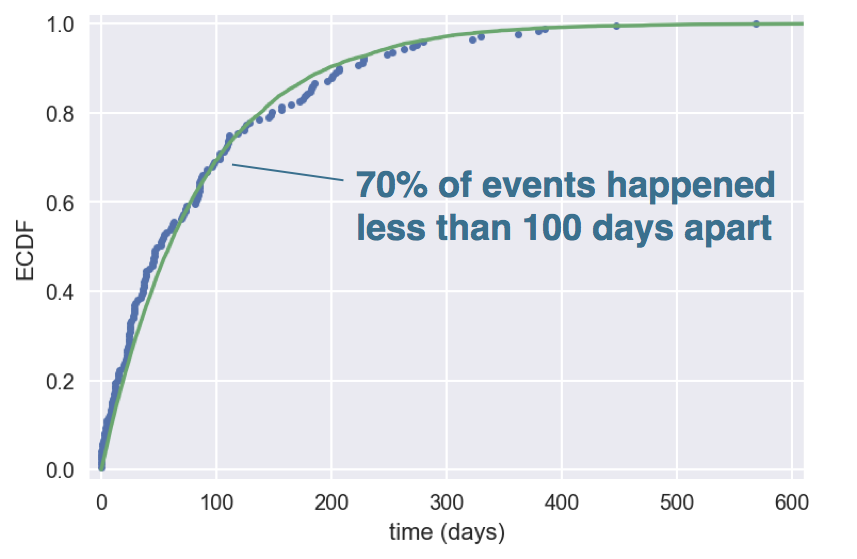Activity of zebrafish and melatonin
Case Studies in Statistical Thinking

Justin Bois
Lecturer, Caltech

Case studies in statistical thinking
- Hone and extend your statistical thinking skills
- Work with real datasets
- Review of Statistical Thinking in Python (Part 1) and (Part 2)
Warming up with zebrafish
![]()
1 Movie courtesy of David Prober, Caltech
Nomenclature
- Mutant: Has the mutation on both chromosomes
- Wild type: Does not have the mutation
Activity of fish, day and night

1 Data courtesy of Avni Gandhi, Grigorios Oikonomou, and David Prober, Caltech
Active bouts: a metric for wakefulness
- Active bout: A period of time where a fish is consistently active
- Active bout length: Number of consecutive minutes with activity
Probability distributions and stories
- Probability distribution: A mathematical description of outcomes
- A probability distribution has a story
Distributions from Statistical Thinking I
- Uniform
- Binomial
- Poisson
- Normal
- Exponential
The Exponential distribution
- Poisson process: The timing of the next event is completely independent of when the previous event happened
- Story of the Exponential distribution: The waiting time between arrivals of a Poisson process is Exponentially distributed
The Exponential CDF
x, y = ecdf(nuclear_incident_times)
_ = plt.plot(x, y, marker='.', linestyle='none')

1 Data source: Wheatley, Sovacool, and Sornette, Nuclear Events Database
The Exponential CDF
x, y = ecdf(nuclear_incident_times)
_ = plt.plot(x, y, marker='.', linestyle='none')

1 Data source: Wheatley, Sovacool, and Sornette, Nuclear Events Database
import dc_stat_think as dcstdcst.pearson_r?
Signature: dcst.pearson_r(data_1, data_2)
Docstring: Compute the Pearson correlation coefficient between two
samples.
Parameters
----------
data_1 : array_like
One-dimensional array of data.
data_2 : array_like
One-dimensional array of data.
Returns
-------
output : float
The Pearson correlation coefficient between `data_1`
and `data_2`.
File: usr/local/lib/python3.5/site-packages/
dc_stat_think-0.1.4-py3.6.egg/dc_stat_think/dc_stat_think.py
Type: function
Using the dc_stat_think module
x, y = dcst.ecdf(nuclear_incident_times)
% pip install dc_stat_think
Let's practice!
Case Studies in Statistical Thinking

